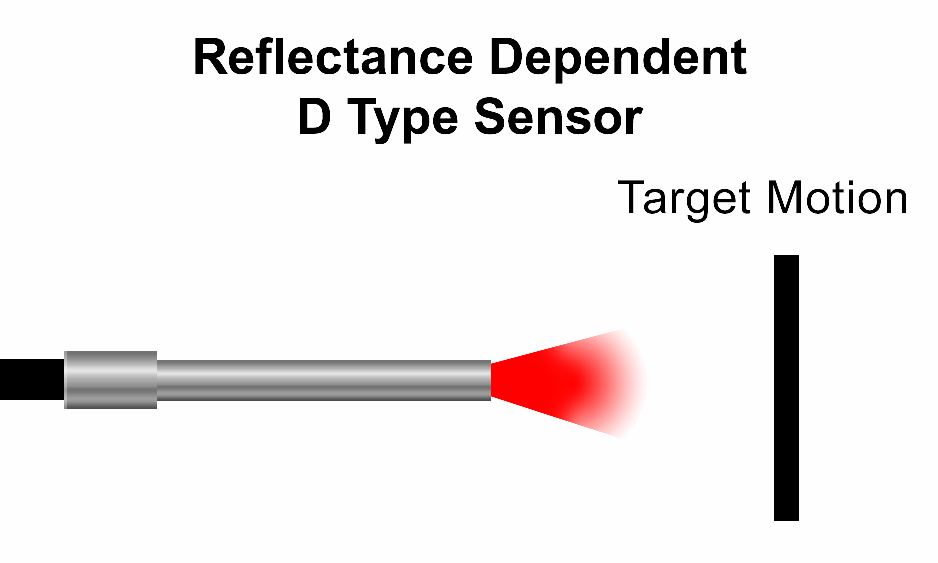About the Sensors
These are retro-reflective type optical devices. The sensors use bundled glass or quartz fibers to transmit light to and receive reflected light from target surfaces. The intensity of received light is processed and used to measure linear distances from 0 to 75 mm away.

D models are commonly used for measurements to objects moving parallel to the axis of the sensor.

RC models are good for single axis measurements as well as for measurements to objects moving past the sensor.
Two types of fiber optics are available:
- Reflectance Dependent – D Type – Read our D Sensor Application Note
- Reflectance Compensated – RC Type – Read our RC Sensor Application Note
How to Build a Sensor
- Choose D or RC type
- based upon Direction of Target Motion
- Select Model Based Upon
- Range of Motion
- Standoff Distance
- Resolution
- Target Spot Size
- Select Sensor Tip Design
- Select Fiberoptic Cable Materials To Suit Application
- Connectorize The System As Desired
- Select Analog or Digital Output Package
- Analog Sensors are fast responding units for dynamic applications with 20 KHz standard bandwidths.
- Bandwidths exceeding 1 megahertz are optional.
- Digital Systems are the best choice for precision gaging applications with a 5 KHz maximum sampling rate.
- Sensor Calibrations Are Stored On-board
- Sensor Output Is Linearized Over the Whole Operating Range
- Analog Sensors are fast responding units for dynamic applications with 20 KHz standard bandwidths.
